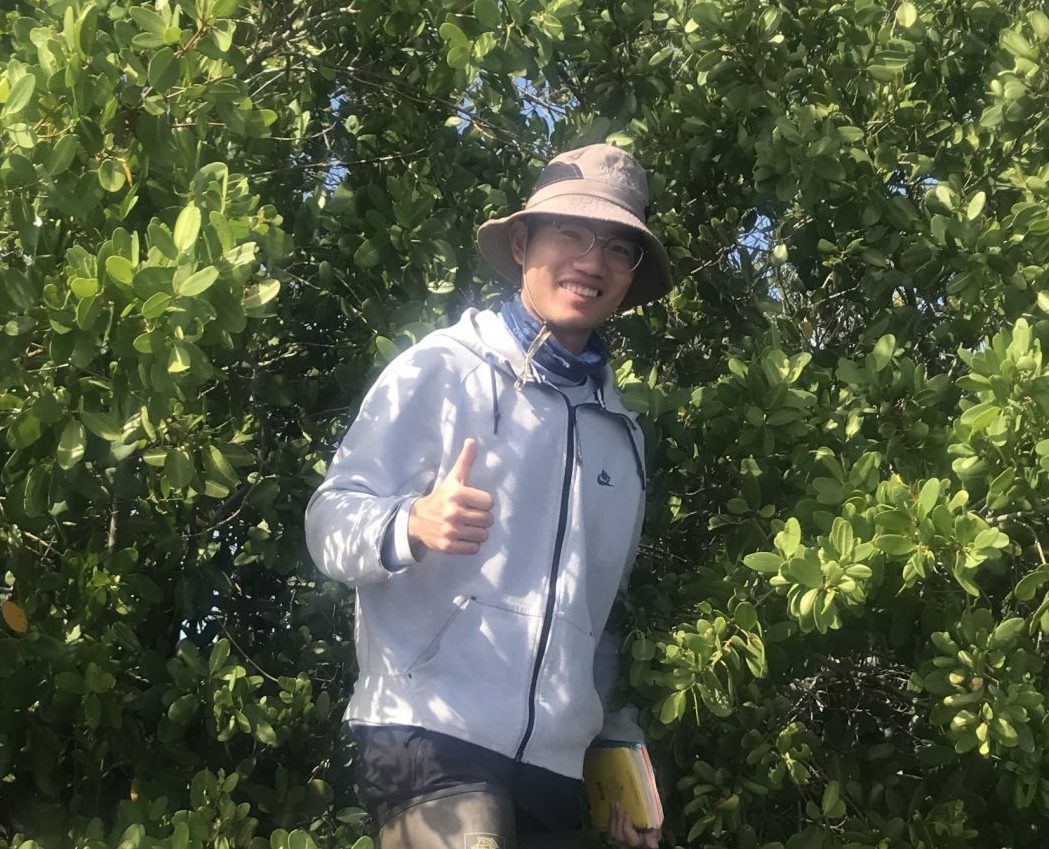As temperatures climb due to climate change, the boundaries of plants and animals are shifting, with many species on the move in search of suitable habitat on a global scale. Mangroves are one such species, and their northward expansion in Florida is fundamentally transforming coastal ecosystems by replacing existing saltmarsh plants and producing new zones of species overlap. Ph.D. student Yiyang “Calvin” Kang in the University of Florida’s School of Natural Resources and Environment is assessing mangrove damage and recovery following a freeze event in December of 2022, to advance the understanding of how these rapidly changing habitats may continue to reshape the coastal landscape of Florida under climate change.
“We need to examine how mangroves are responding to extreme low temperatures, also known as freeze events, especially in its range limits, so that we can better predict how the process of mangrove expansion is going to continue to transform coastal wetland ecosystems,” said Kang.

Mangroves play a critical role for people and wildlife as their dense roots filter excessive nutrients in the water and reduce coastal erosion. These forests connect land and water and provide habitat for numerous species of wildlife. One of nature’s heroes in mitigating climate change, mangroves store large amounts of carbon in both the soil and the plant’s biomass. The herbaceous saltmarshes being replaced by woody mangroves provide a markedly different ecosystem structure and vary in extent and patterns in those ecosystem services. The interplay between saltmarsh and mangroves, especially at the mangrove range limit, may fundamentally alter coastal ecosystem functions like wave attenuation, wildlife habitat, carbon sequestration, and even coastal views as Florida’s dynamic coastline is affected by climate change.
Kang studied mangroves before and after a freeze event in December, 2022, at 12 research sites along the Gulf of Mexico. He found that white mangroves (Laguncularia racemosa) are the least freeze resistant, black mangroves (Avicennia germinans) are the most freeze resistant, and red mangroves (Rhizophora mangle) are in the middle. Interestingly, short red mangroves were more resistant to freeze than their tall counterparts as their leaves had less damage On the other hand, both tall and short black mangroves were relatively resistant to the freeze event. These findings shed light on the process of freeze-governed mangrove range expansion, and consequently, how coastal ecosystems structure and function will be altered. This research is funded by the UF Nature Coast Biological Station (NCBS) and the United States Geological Survey (USGS).

Driven by curiosity, Kang enjoys exploring a world brimming with the possibility of new discoveries.
“One fascinating thing about nature is it’s full of surprises,” said Kang. “You feel like you know how nature works from readings and literatures, but then you go out there and it’s full of surprises, full of outliers, scenes that nobody has documented or adequately addressed – it’s full of questions to be answered.”
—
By Megan Sam
